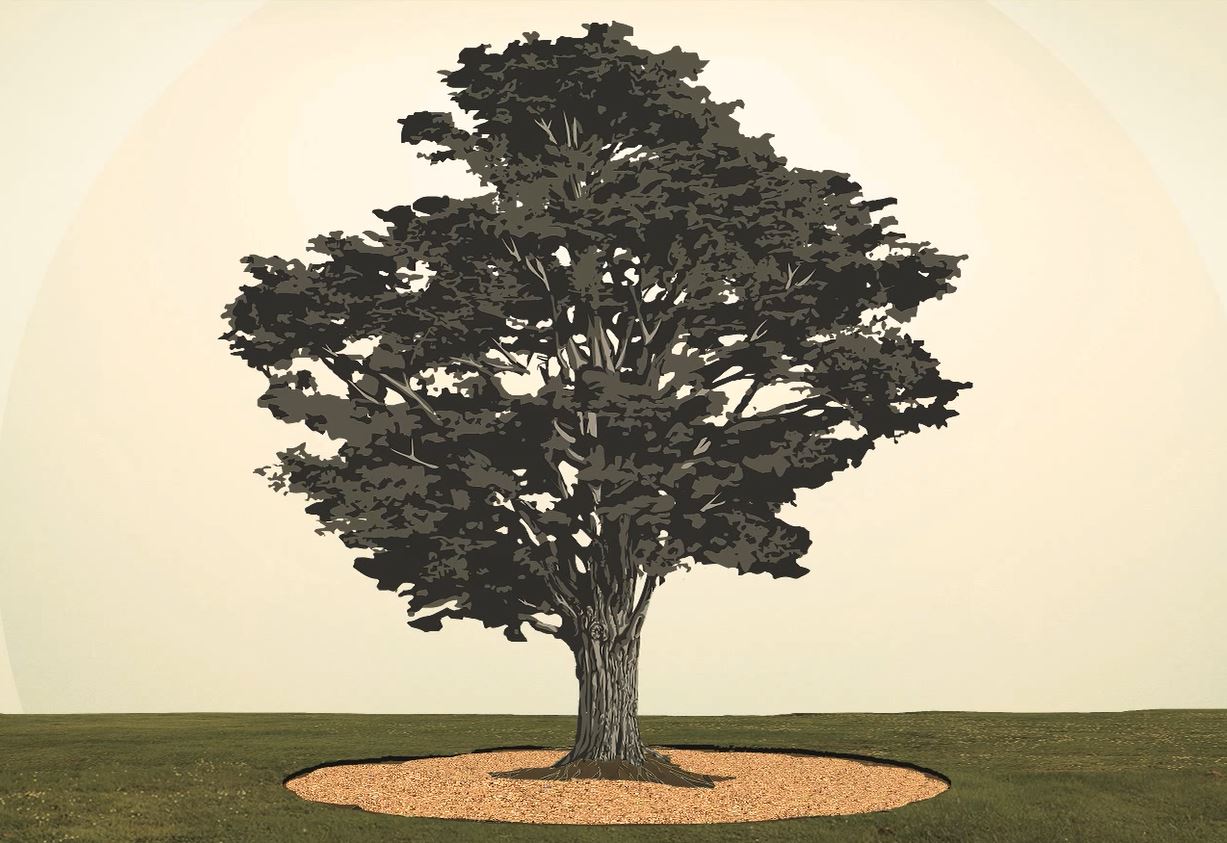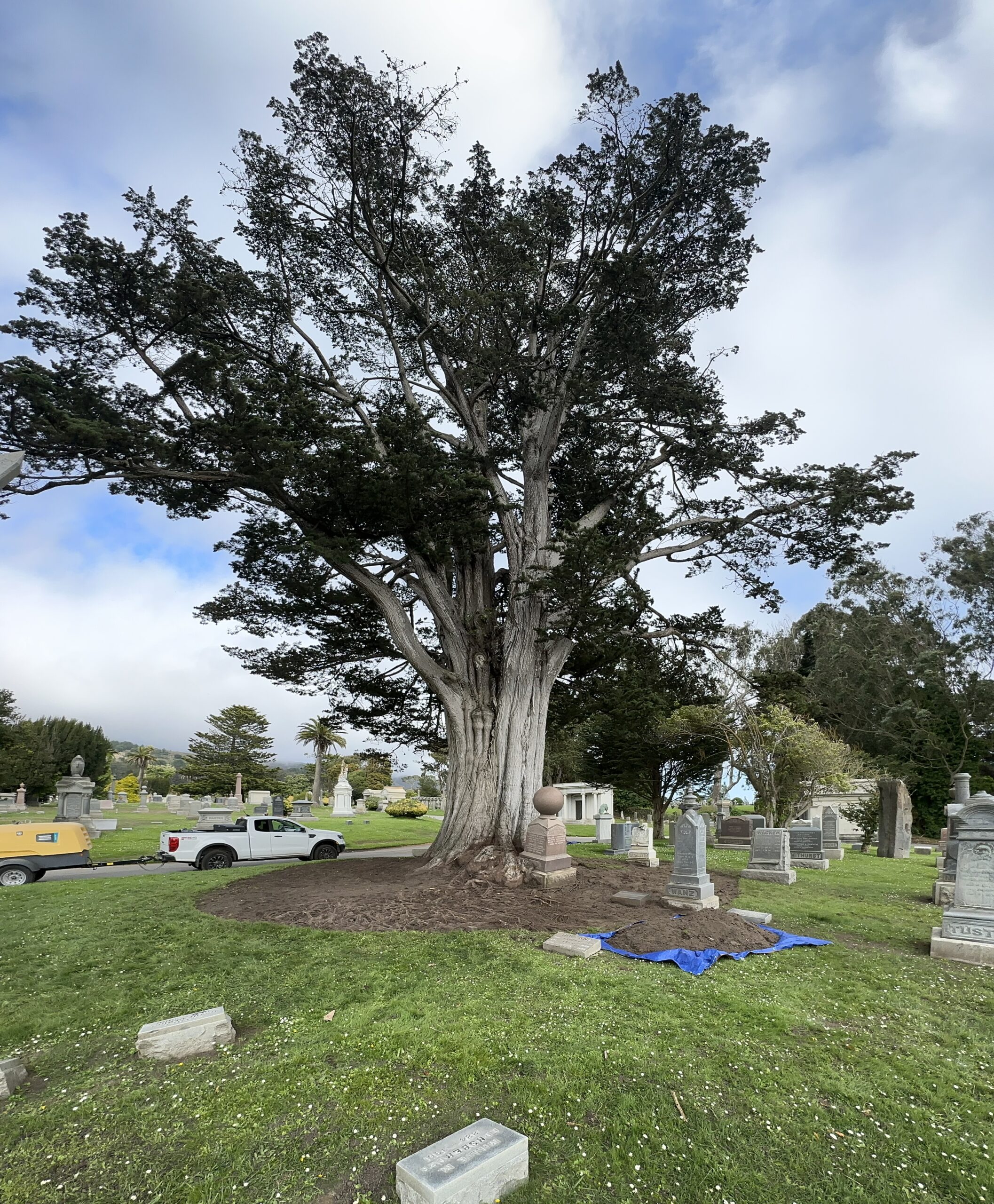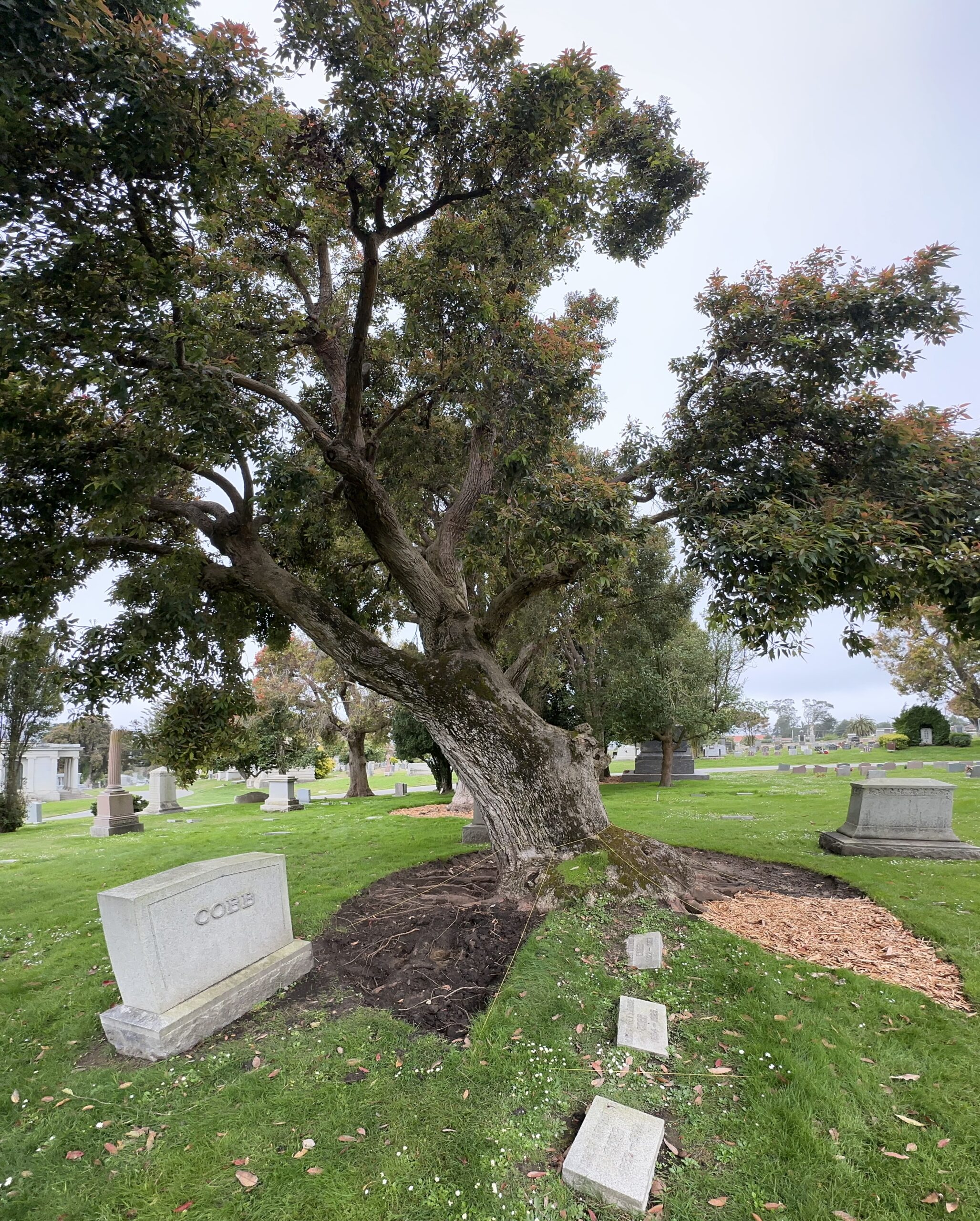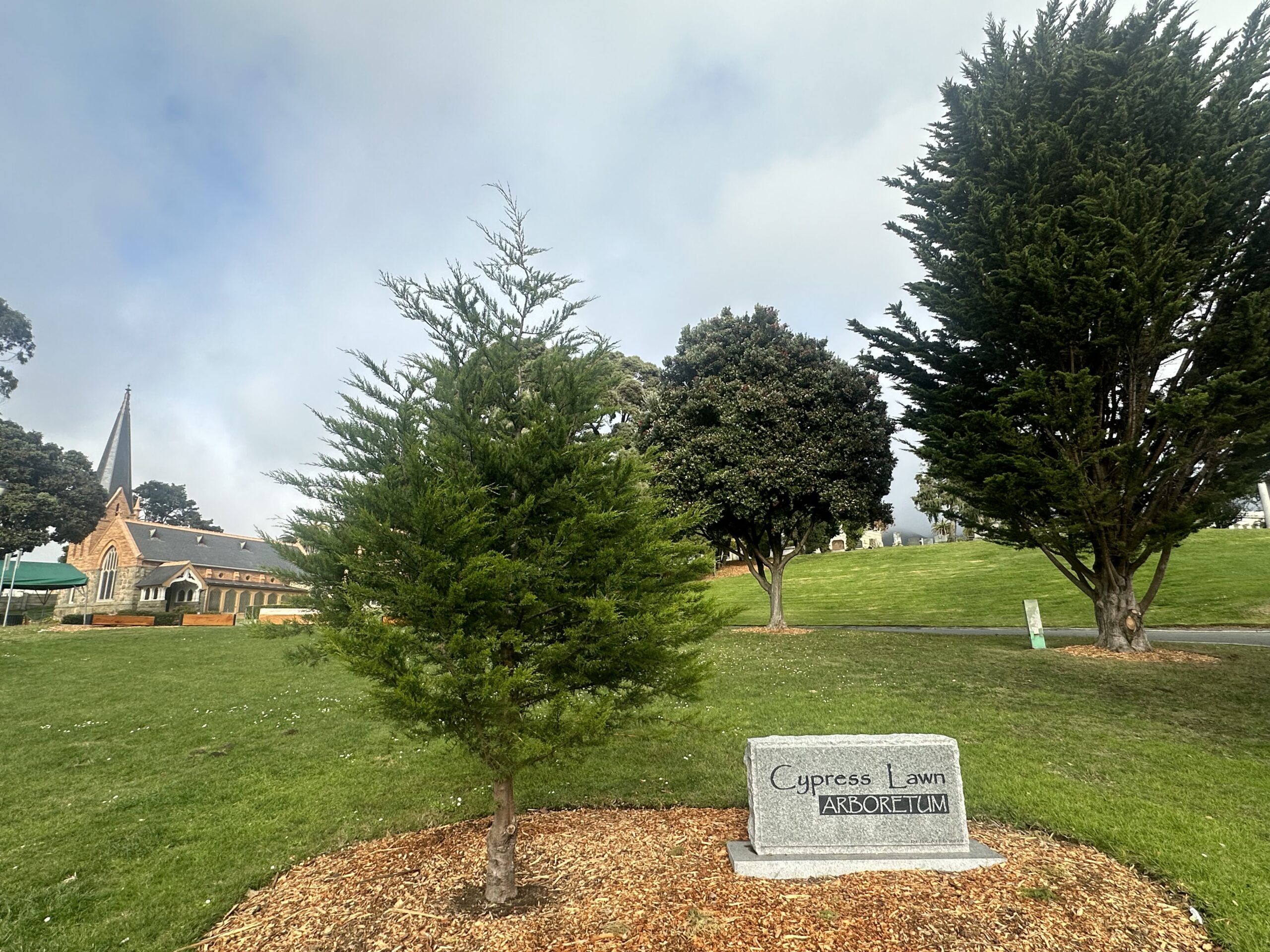
Cypress Lawn Arboretum has long been a meaningful place of trees. A remarkable truth of this heritage landscape is that the original cemetery sections of East campus were planned and planted with trees prior to the first human burials, when Cypress Lawn formally opened its gates in service of Bay Area families in the year 1892.
With this fact in mind, it is powerful to acknowledge that Cypress Lawn was an Arboretum even before it was a cemetery. The trees are a formative part of our growing story, alive and well into the present!
Extending the lives of our original trees – especially by caring for their roots – is really a way of honoring our founders and carrying forward their monumental legacy.
In tending to the roots of our most ancient trees here at the Arboretum, I often speak about three fundamental reasons for establishing mulch rings.

A mulch ring is a circular area of the ground underneath a tree, which has been cleared of lawn or turf, potentially as far out as the dripline, or the edge of the growing canopy of the tree. While the radius of a mulch ring may vary depending on the size of the tree and the surrounding context of the site, the most important area for clearing turf and putting mulching is the critical root zone.

This area is typically defined by arborists as 1.5 feet per inch of the tree’s diameter at breast height, or DBH. This size metric of a tree is traditionally calculated at 4.5 feet above the soil grade. So, for a tree 12 inches or 1 foot in DBH, the critical root zone would be a ring with a radius of 18 feet.
It should also be noted that mulch rings are rings, NOT full circles! Piling mulch right up against the trunk of a tree may invite fungi and other decay pathogens to infect the tree, so remember to keep mulch clear of direct contact with the tree bark, ideally a few inches away from the trunk itself.
A first and foremost reason for the proactive process of managing tree root health is about something you may not expect – gas!
While trees do not “breathe” with specialized organs like the human lungs, gas exchange in the root zone of all terrestrial plants is essential for their lives to thrive.
Trees are a primary ally of humankind in the balance of gases in our shared atmosphere, as they take in the carbon dioxide we give off, in exchange for providing the oxygen that we all so fundamentally need to live and breathe as people.

The delicate balance of gas exchange in trees can be suffocated by excess soil in the primary root zone, especially right up against the trunks of mature trees like this.
So, the key arboriculture practice of root crown excavations is a way of giving our trees a breath of fresh air, so they can live their best lives as our friends and allies in the stewardship of Earth’s atmosphere. In the long run, if they suffocate, we will too.
Another important reason for installing mulch rings around our old heritage trees, and also for new plantings, both of which grow as living cultural assets of the Memorial Park, is to provide a buffer from the potential for mechanical damage.
While Cypress Lawn is and will always be a meaningful place of trees, the Lawn of our park is also an important element of the aesthetic of the landscape here, which needs substantial ongoing management.
The tools of lawn maintenance, string trimmers and mowers, are powerful machines that get the job done. Our dedicated grounds staff at Cypress Lawn do a wonderful job maintaining our lawns, and preserving that essential part of the beauty of this special place.
Tree roots, however, are vulnerable to the tools of lawn care, and if we are not thoughtful about protecting the trees, mechanical damage caused by string trimmers and mowers can actually cause major harm and stress to trees young and old. In the most unfortunate cases, this trauma may actually kill the wooden ones.
So, to protect our trees and make the work of our dedicated grounds team all the easier, a simple buffer provided by a mulch ring separates the critical zone of primary tree roots from the zone of turf management. In this way, both the trees and the turf can coexist to thrive in the landscape, and our own teamwork as people may thrive in tandem too!
Furthermore, another very important benefit of mulch rings is… the value of the mulch itself!!
The key nutrients available in the wood chip mulch, especially nitrogen, may eventually go right back into the living tree as this organic material decomposes over time.
 Here at the Arboretum, we recycle chips from trees and branches that have been lost or removed over the seasons, giving this plant material a second life that cycles back into our forest of the future.
Here at the Arboretum, we recycle chips from trees and branches that have been lost or removed over the seasons, giving this plant material a second life that cycles back into our forest of the future.
This intentional process of mulching mimics the flows of nature you would find in the woods. In the natural forest, the leaf litter falling from mature trees onto the ground slowly breaks down into humus, and further decomposes to form the soil profile over time.
By going with nature, the method of mulch allows the trees of our Arboretum to live in kind with the flows and cycles of the earth that they have evolved to thrive in.
By caring for the trees and turf of Cypress Lawn, with the establishment of mulch rings throughout our grounds, we are collectively living and growing with an intention of love and care for this remarkable place.
By protecting the trees, extending their lifespans and fostering a healthy balance on into our shared future, this singular Memorial Park may be a gift for future generations to enjoy, a place welcome to all, to celebrate life!
